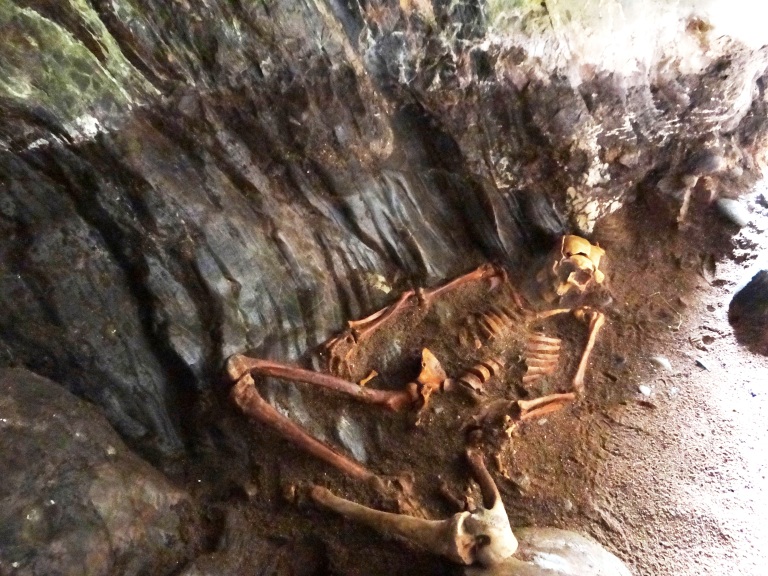The Pictish period skeletal remains, c . 430 – 630 AD, of a robust young man with severe cranial and facial injuries was found by archaeologists in a cave on the Black Isle in 2016. As has been widely reported, a facial reconstruction of the man was later produced by Dame Sue Black and her team at the University of Dundee. This is an account of the story from a digger’s perspective.
The Rosemarkie Caves Project (RCP), founded and led by Simon Gunn as a part of NOSAS, has since 2006 investigated the archaeological potential of a range of 19 caves on a 2.5 mile stretch of coast north of Rosemarkie. Activities have included comprehensive surveys, test pitting and fuller excavations (see our earlier blog post for an introduction).
In September 2016 it was decided that a full two week excavation would be carried out at “Cave 2B” where previous test pitting results had been revealing some interesting results. Here animal bone and charcoal excavated from depth of over one metre had yielded calibrated radio carbon dates of 600 – 770 AD, which is generally regarded as the Pictish period in Scotland. In addition this particular cave also had an unusual built wall structure spanning its entrance. It was felt by the RCP Committee that these factors made it a prime site for more detailed excavation.
Read the rest of this article...
Read the rest of this article...

No comments:
Post a Comment